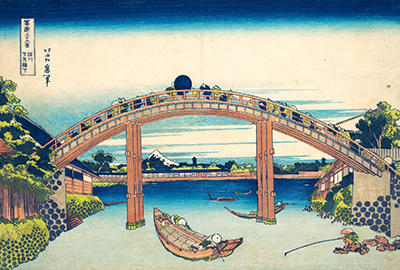Hokusai
Hokusai Paintings
A master during his own lifetime, Hokusai’s paintings peaked during the last 30 years of his life with a selection of his most famous artwork included in this section.
The Great Wave of Kanagawa continues to spearhead the artist’s reputation, but there is so much more to see in this extensive career. Katsushika Hokusai produced portraits and landscapes in a multitude of different mediums. For the purposes of simplicity, we have included all mediums within this section, including ink drawings, woodblock prints and the more colourful Ukiyo-e brush paintings. Hokusai would draw in techniques from Europe and Asia in order to perfect his work. His own understanding of nature, myth and history would also help to develop the content in his work. This prolific Japanese artist would produce 3,000 colour prints during his lifetime, from a career which spanned 70 years.
His keen eye and passion for the natural world ensured he was never short of inspiration for his work. During this period there was not much of an opportunity to travel around the country or abroad particularly easily. As such, Katsushika Hokusai would need to draw on his extensive collection of books to expand upon his influences and ideas for future work. The impact of Japanese artists such as Hokusai upon famous European artists is well known, but there was also some influence going in the other direction. Hokusai, for example, collected imported engravings as well as possessing endless books on worldwide art movements. Art was a significant part of Japanese culture which reminded many of the virtues of communication across cultures and languages. We can draw together the genres that he worked on and compare the similarities that can be found with the Impressionist movement, featuring the likes of Monet, Manet and Degas.
A isolationist Japan was starting to see through the work of painters like Hokusai that there was much to learn from abroad, just as much as Japan itself had a culture which others would become inspired by. This exchange would be fruitful for long periods, allowing ideas to settle and develop over time. Hokusai’s prints would be collected around the world and help others to understand more about the beauty of the Japan countryside as well as the technical talents of it’s finest artists. The spread of information between different cultures was far harder to achieve then than now, and so art would played a critical role in educating and inspiring in this way. Some of Europe’s most famous artists, for example, would collect and copy Japanese paintings in order to better understand these alternative methods. In today’s market you will find this artist regularly reproduced as large posters for those who want to add the beauty of his work to their own homes. Some of the iconic images found within the 17th to 19th century are entirely accessible to the public, even for those very new to art and seeking something with aesthetic beauty and an immediacy of impact.
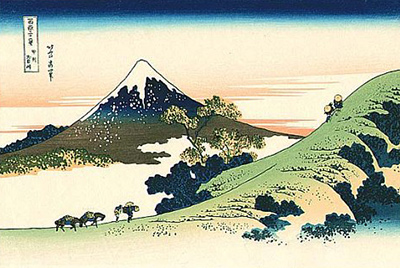
Thirty Six Views of Mount Fuji
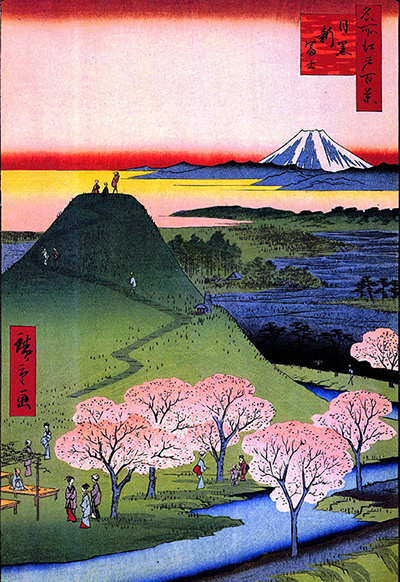
One Hundred Views of Mount Fuji
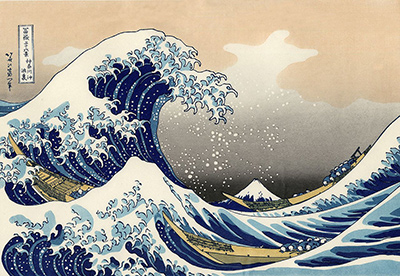
Great Wave off Kanagawa
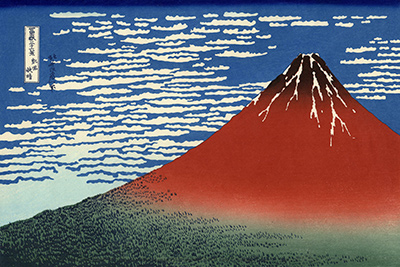
Fine Wind Clear Morning
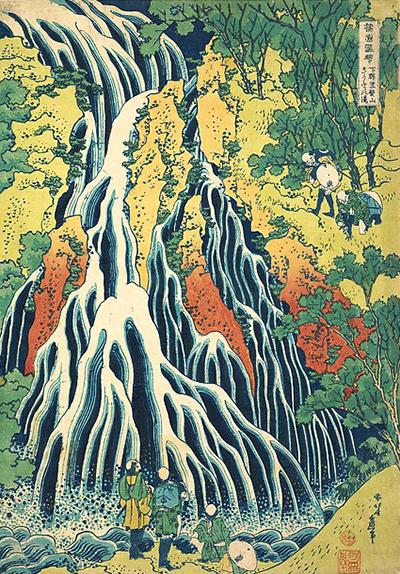
Kirifuri Waterfall at Kurokami Mountain in Shimotsuke
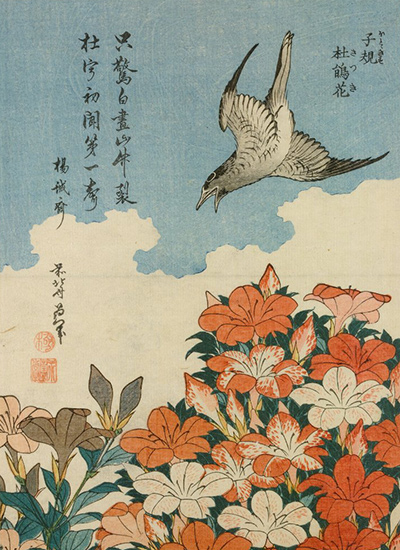
Cuckoo and Azaleas
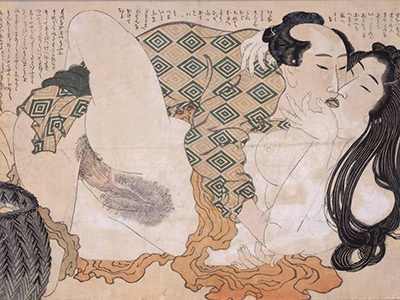
Shunga
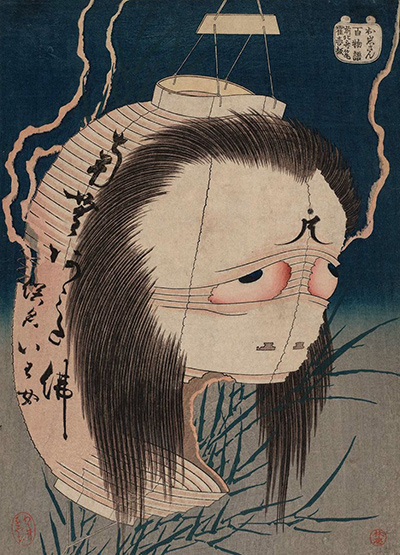
The Ghost of Oiwa
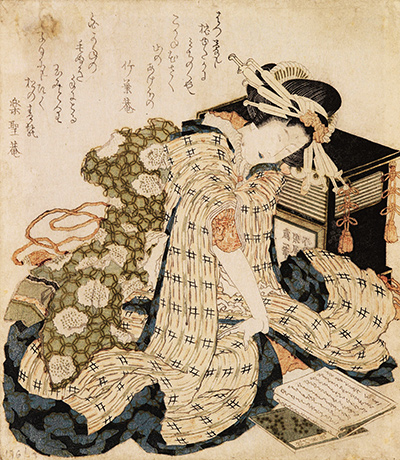
Courtesan Asleep
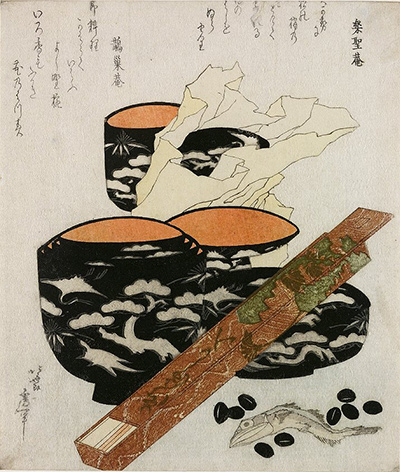
Still Life
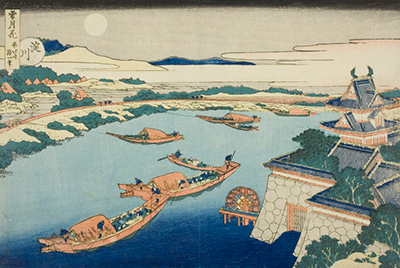
The Yodo River Moon
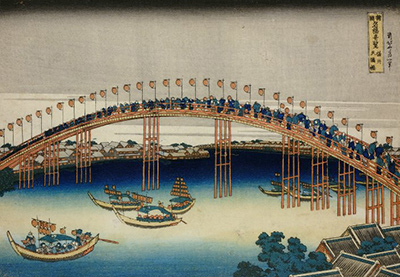
Tenma Bridge in Setsu Province
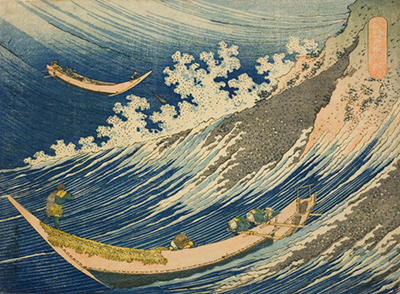
Choshi in Shimosa
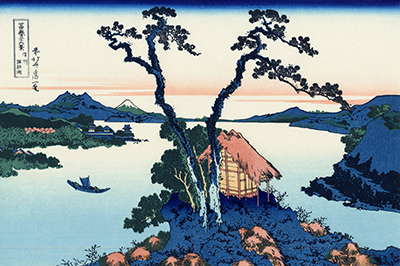
Lake Suwa in Shinano Province
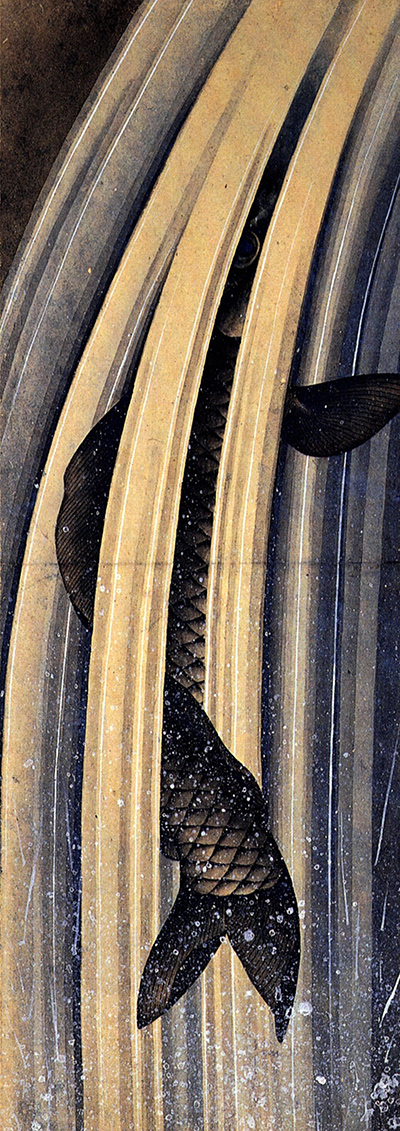
Carp Leaping up a Cascade
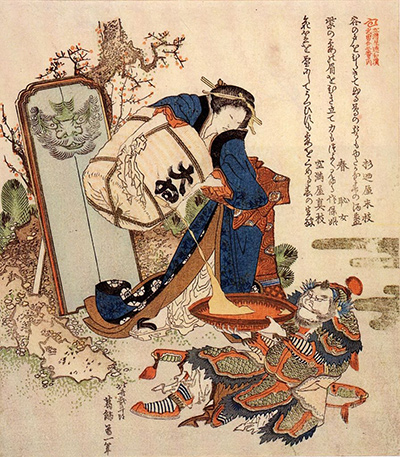
The Strong Oi Pouring Sake
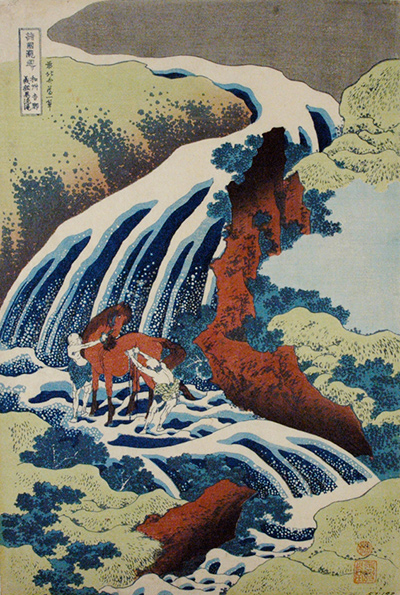
Yoshino Waterfalls where Yoshitsune Washed his Horse
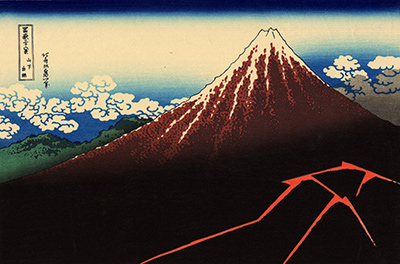
Rainstorm Beneath the Summit
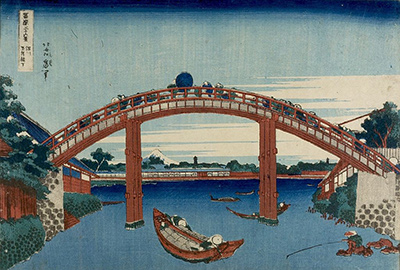
Under Mannen Bridge at Fukagawa
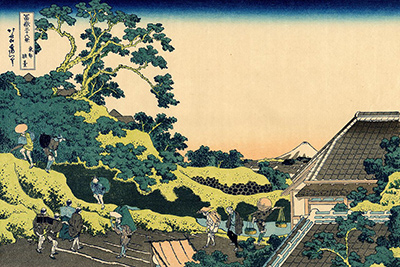
Sundai Edo
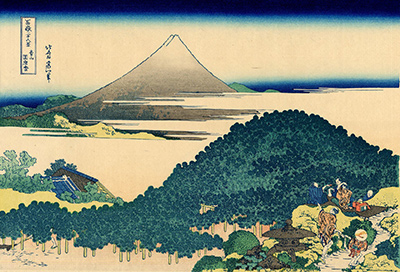
Cushion Pine at Aoyama

Senju Musashi Province
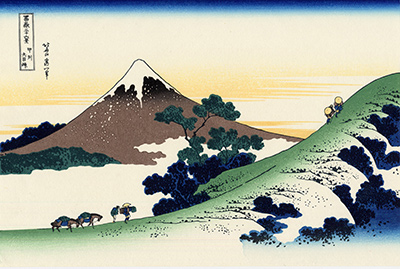
Inume Pass Koshu
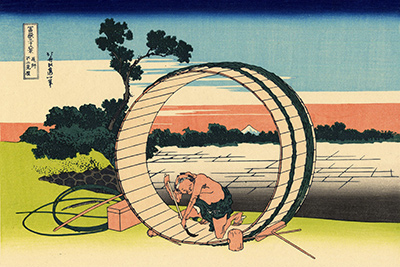
Fuji View Field in Owari Province
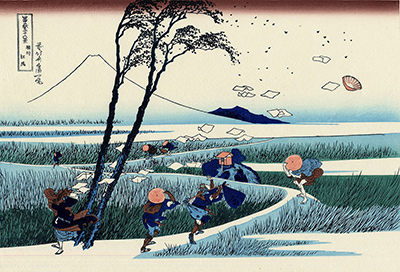
Ejiri in Suruga Province

Mitsui shop in Suruga in Edo
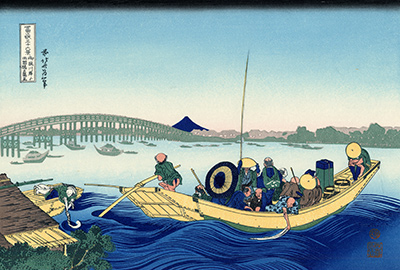
Sunset across the Ryogoku bridge from the bank of the Sumida River at Onmayagashi
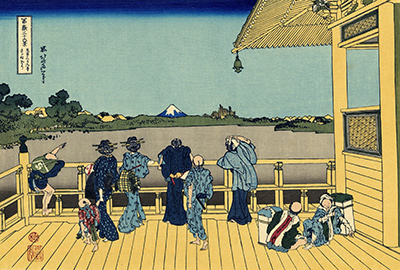
Sazai hall – Temple of Five Hundred Rakan
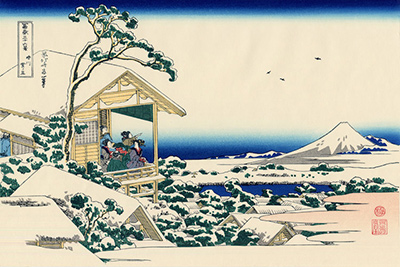
Tea house at Koishikawa
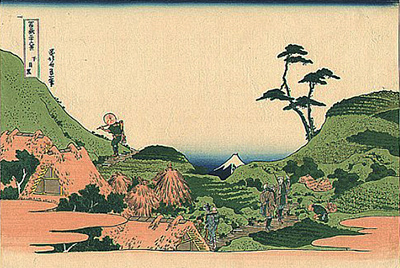
Below Meguro
v

Watermill at Onden
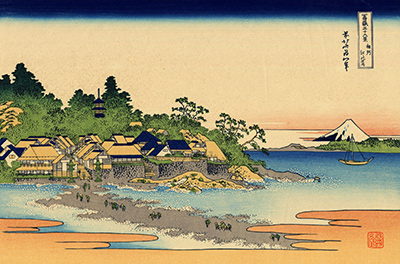
Enoshima in Sagami Province
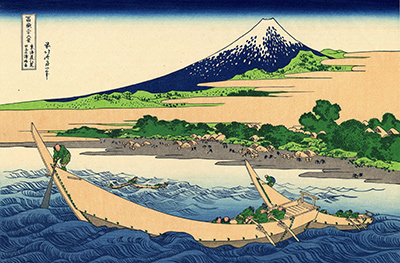
Shore of Tago Bay Ejiri at Tokaido
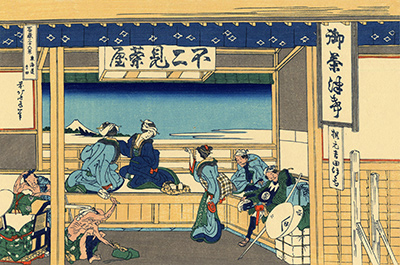
Yoshida at Tokaido
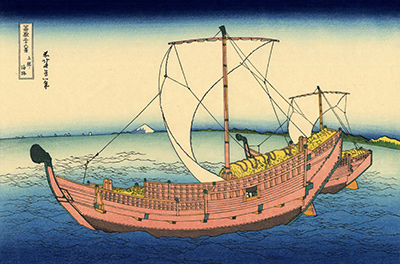
The Kazusa Province sea route
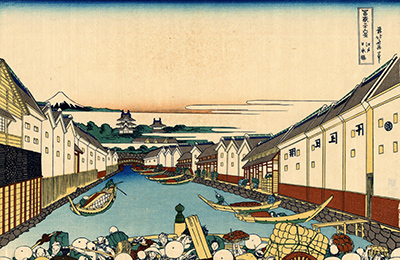
Nihonbashi bridge in Edo

Barrier Town on the Sumida River
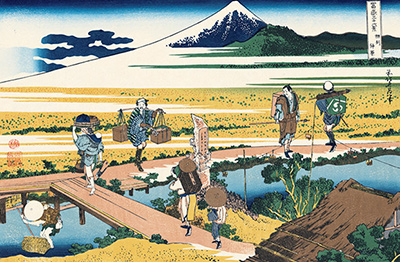
Bay of Noboto
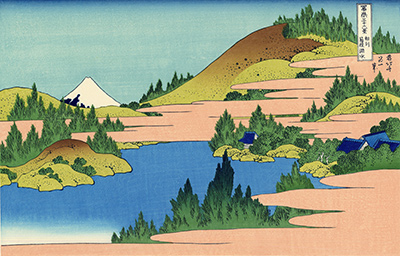
The lake of Hakone in Sagami Province
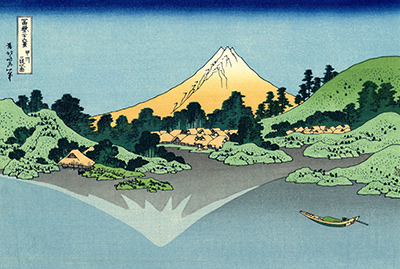
Mount Fuji reflects in Lake Kawaguchi, seen from the Misaka Pass in Kai Province
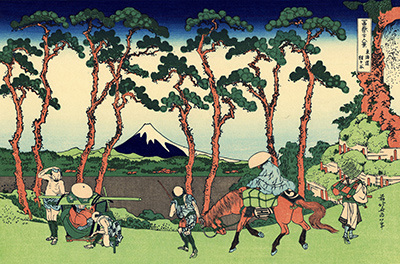
Hodogaya on the Tokaido

Tama River in Musashi Province
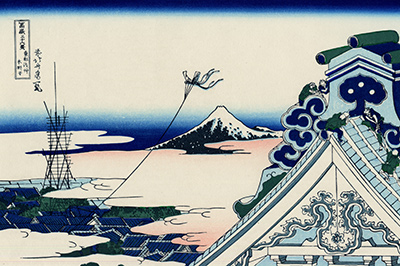
Asakusa Hongan-ji temple in the Eastern capital Edo
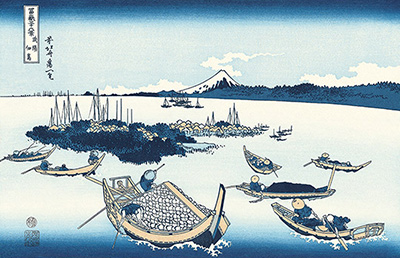
Tsukuda Island in Musashi Province
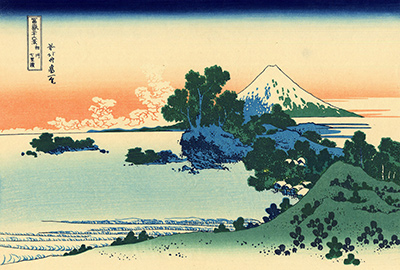
Shichiri beach in Sagami Province

Umezawa in Sagami Province
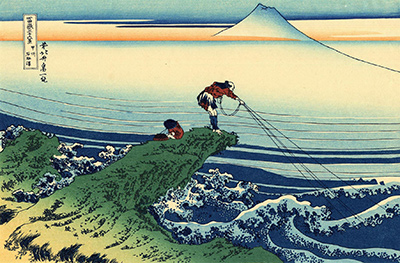
Kajikazawa in Kai Province
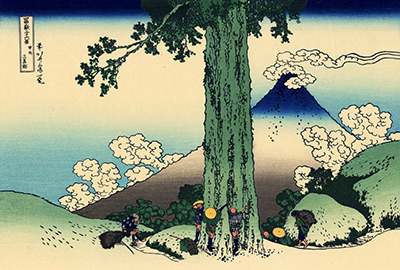
Mishima Pass in Kai Province

Mount Fuji from the Mountains of Totomi
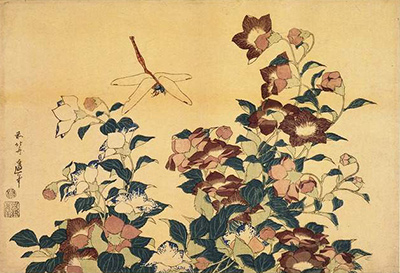
Bluebells and Dragonflies
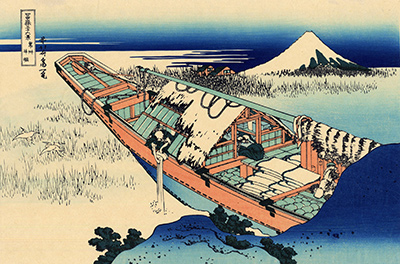
Ushibori in Hitachi Province

Goten-yama-hill Shinagawa on the Tokaido
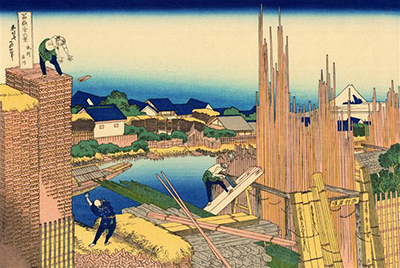
Honjo Tatekawa the timberyard at Honjo Sumida
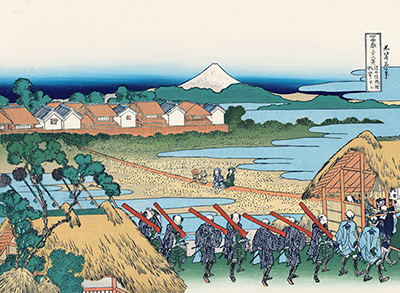
Pleasure District at Senju

Nakahara in Sagami Province
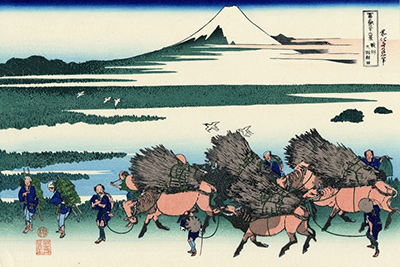
Ono Shinden in the Suruga Province
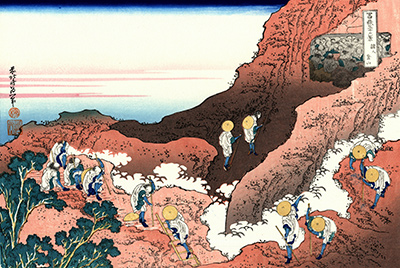
Climbing on Fuji

The Tea plantation of Katakura in Suruga Province
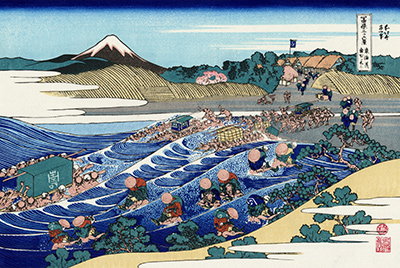
The Fuji from Kanaya on the Tokaido

Dawn at Isawa in Kai Province
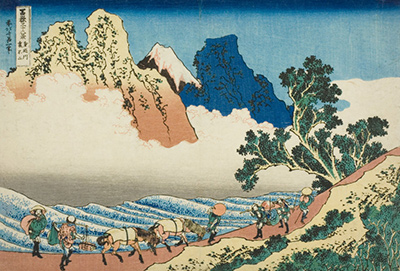
The back of Fuji from the Minobu river

Dragon
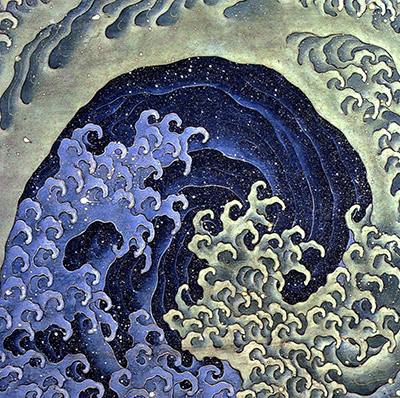
Feminine Wave

Masculine Wave
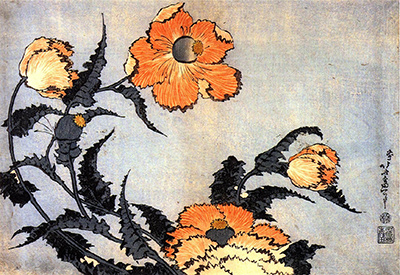
Poppies

Hydrangea and Swallow
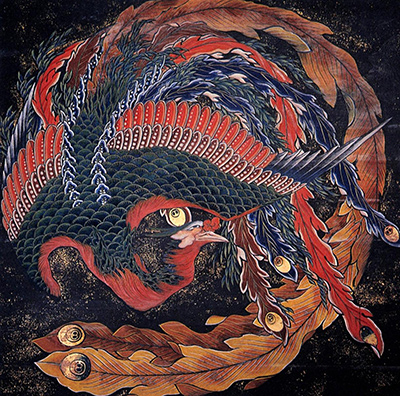
Phoenix
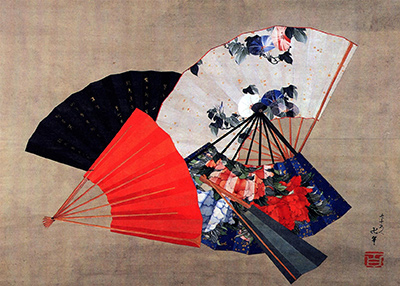
Five Fans
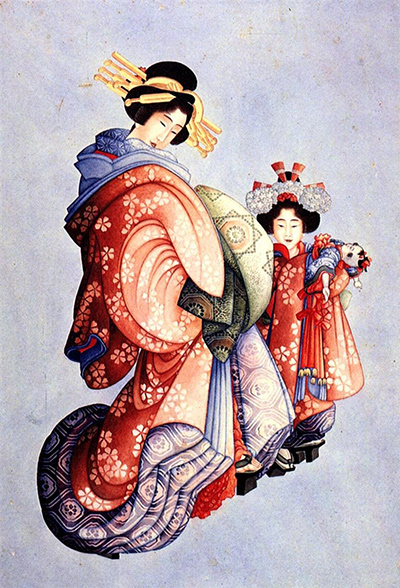
Oiran and Kamuro
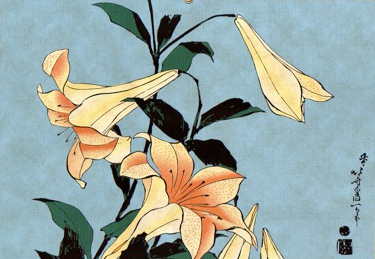
Lily
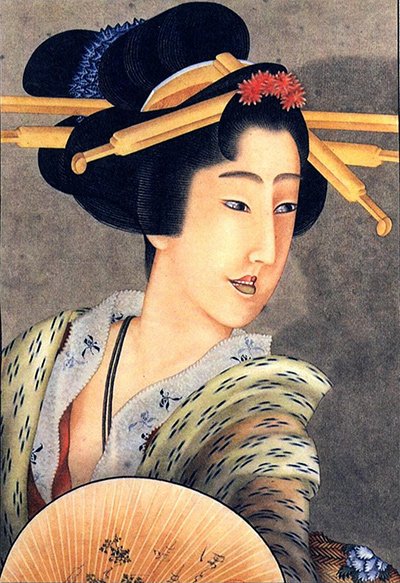
Portrait of a Woman Holding a Fan
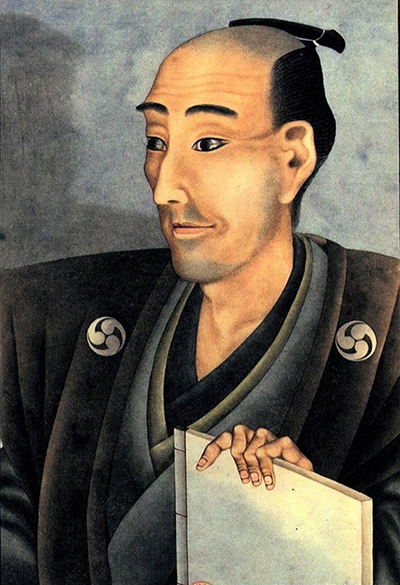
Portrait of a Man of Noble Birth with a Book

The Fuji from Gotenyama at Shinagawa on the Tokaido
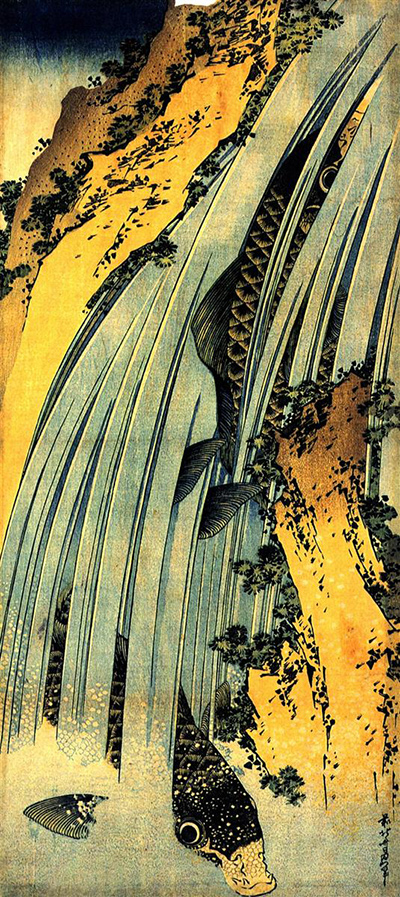
Two Carp in a Cascade
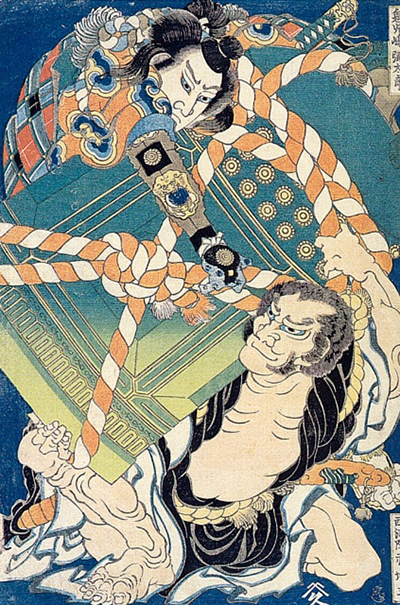
Onikojima Yataro and Saioin Akabozu
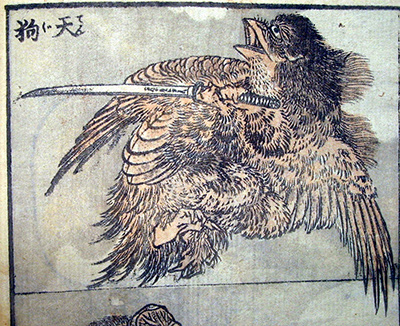
Drawing of a Tengu
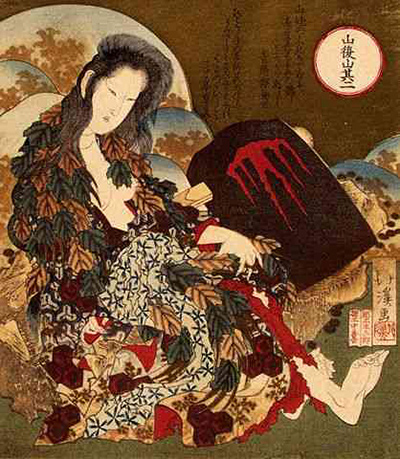
Yama Uba

Orange Orchids
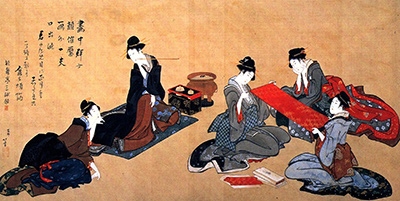
Portrait of Chino Hyogo Seated at his Writing Desk
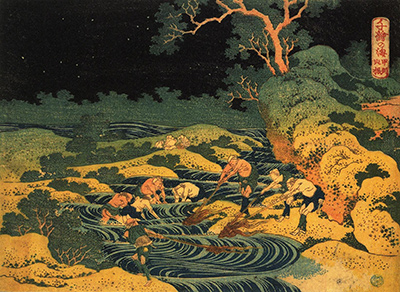
Fishing by Torchlight in Kai Province from Oceans of Wisdom

Peonies and Butterfly
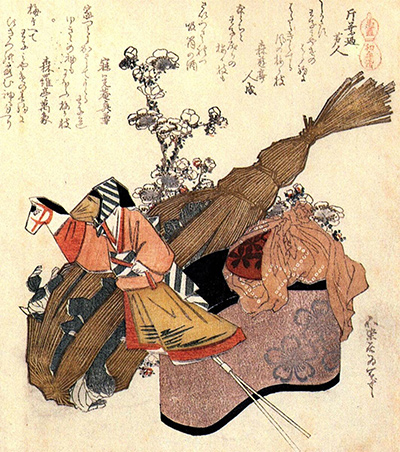
A Hand Puppet
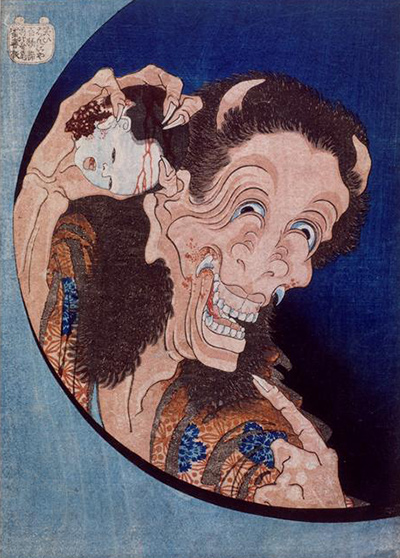
Laughing Demon

Carps
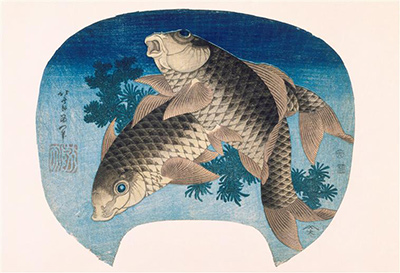
Two Carps
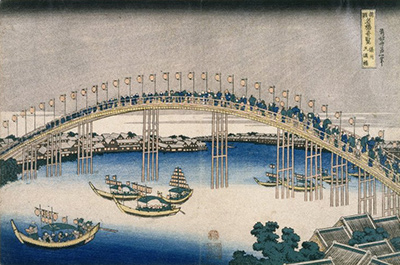
The Festival of Lanterns on Temma Bridge
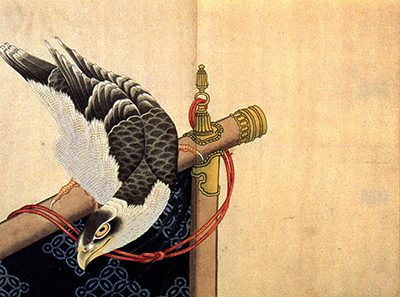
Hawk on a Ceremonial Stand
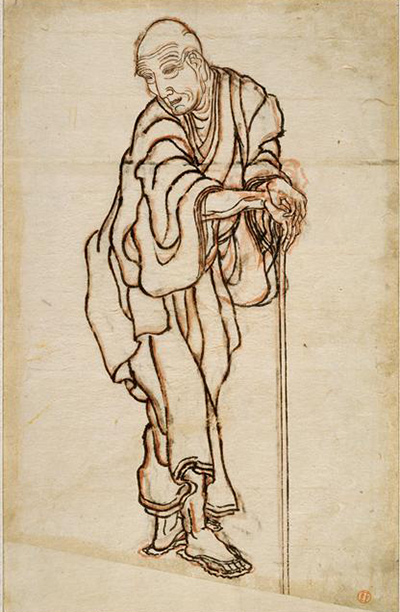
Self Portrait in the Age of an Old Man
Japan was a culture deep in customs and superstitions. It still continues to be so today, although somewhat diluted by the impact of western influences. Hokusai produced some erotic work in a style known as Shunga. Such a style would be considered controversial in Europe, yet in Japan was used as a powerful protection against death or fire by different sections of society. Compare that to the situation in Michelangelo’s Last Judgement, where the artist was forced to cover up elements of the work due to criticism from the work’s commissioners. What some would seen by some as beautiful and elegant, a celebration of the human body, would look to others as entirely unacceptable and a danger to society. Modern eras tend to be more respectful of differences, generally speaking, particularly within more developed economies.
Common Themes used by Katsushika Hokusai
Whilst being a diverse, ambitious artist who constantly attacked new ideas and techniques, Hokusai’s career can be summarised into several key themes which appear repeatedly across his work. These are also seen amongst the careers of other artists from Japan at around the same time and were essentially the key attributes of a movement which achieved success at home and abroad. The nation itself had exported its style as a complete industry and greatily advanced its economy by producing reproductions of some of the iconic imagery produced by artists such as Hokusai. There was a charming and calming quality to much of their work which translated abroad without any need for explanation or back story. The simplest of forms can be understood immediately, whether one is knowledgeable of its root culture or not.
- Birds and Flowers
- Mountainous landscapes with some human activity
- Waterfalls
- Seascapes
- Portraits and family life
